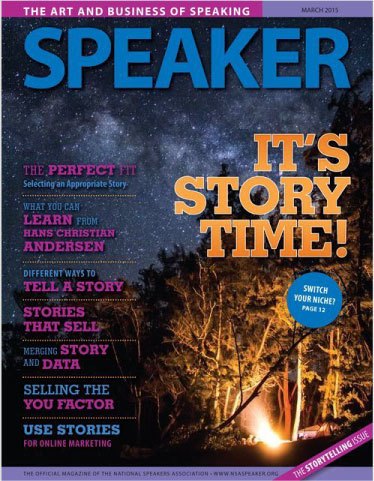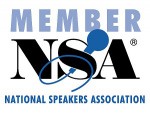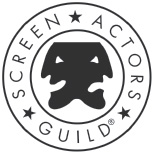Last week I met with a young manager who was frustrated by the success of a colleague:
I don’t understand how she gets buy-in to the exact same ideas I try to pitch. Somehow when she explains it everyone jumps on board.
I wasn’t surprised to hear this. His colleague is a phenomenal storyteller. Often the difference between a recommendation that is embraced—and one that isn’t—is the way in which it is communicated.
Communicate with Narrative for Better Impact
Researchers have found that ideas expressed with narrative are more memorable and more persuasive than concepts shared with simply data or facts.
According to Uri Hasson, a neuroscientist from Princeton, when audiences hear stories their brain activity synchronizes to the brain activity of the storyteller. The results of his research propose that a story can plant thoughts, ideas and emotions into a listener’s brain.
So what exactly is a story?
A story is simply a series of events where the audience cares what happens next. The problem with many business presentations is that they are a series of static events with little or no emotional pull. The most recent presentation I attended went like this:
“Our year-to-date number is w. Our expenses were x. Our goal for 2016 is y. Our customer engagement scores are z. Our marketing plan is on track.”
And on and on and on…
This presentation should have been a story of victory and celebration. The company had started the year facing possible bankruptcy. They’d lost key accounts and important subject matter experts. Their expenses were growing and their customer engagement scores were plummeting.
Then, early in Q2, they took a risk and promoted a newly hired Regional Sales Manager to the role of Global Sales Director. He challenged everyone on his team to step up. He instituted a new sales process, one that required more rigor in overcoming objections. He required that detailed notes be recorded after every single customer conversation and he reached out to the head of Marketing to make sure the two of them were in alignment on company messaging.
Two years later, company expenses were down, their customer scores and sales were up and the marketing plan was working! All the worry, hard work and late nights had paid off. The creditors were no longer pounding at the door and now, instead of bankruptcy, the company was considering opening an office in London.
Unfortunately, the presenter (who was not the Global Sales Director) reported just the facts and none of the emotion. I watched helplessly as he drained all of the oxygen out of the room.
His presentation should have inspired his audience, but because he hadn’t implemented the magic and mechanics of good narrative structure, it fell flat.
Good Narrative Structure has Five Acts
Strong storylines follow a classic architecture. The fundamentals I teach are distilled from well-written screenplays. Business can learn a lot about crafting compelling presentations from Hollywood.
The Structure is comprised of five sections, or acts:
- Act One: The Before
- Act Two: The Inciting Incident
- Act Three: The Journey
- Act Four: The Climax
- Act Five: The After
Act One: The Before
This step serves two important functions: 1) It provides background and/or context. 2) It introduces the hero of the story—and provides a reason for the audience to care about him or her.
“A long time ago in a galaxy far, far away…”
The famous roll-up at the beginning of every Star Wars film (1977/ 1980/ 1983/ 1999/ 2002/ 2005/ 2008 Director: George Lucas. 2015 Director: J.J. Abrams) is a classic example of the first function of Act One: The Before. It provides context for the rest of the film.
Soon after the crawl disappears from Star Wars: Episode IV: A New Hope, we meet Luke Skywalker, the hero of the film. We learn that Luke lives on a moisture farm with his Aunt and Uncle.
The screenwriters are clever in providing a powerful reason for the audience to care about him immediately. Luke is an orphan. He wants to become a pilot, he wants to make something of his life, but he’s stuck on the family farm. These are the ingredients of his world BEFORE the story gets going.
Business often gets this important first step wrong. Executives forget to provide context, mistakenly believing that they are the heroes of their own presentations.
Hint: Make the Audience the Hero of Your Presentation
If you accept the definition that a story is a series of events where viewers care what happens next, then it follows that what people often care most about is…themselves.
In business presentations, the hero of your story should be your audience.
In the example I cited above, a well-intentioned executive wrote his presentation without giving much thought to his audience. He included data that was important to him, but he gave his listeners no explicit reason to care about his data.
In the above re-telling of the story, Act One starts like this:
The company had started the year facing possible bankruptcy. They’d lost key accounts and important subject matter experts. Their expenses were growing and their customer engagement scores were plummeting.
Possible bankruptcy! Losing key accounts! This urgency creates emotional tension for the audience, especially for employees that have experienced the company’s tough times themselves.
Act Two: The Inciting Incident
Another essential component is a scene that brings some kind of change for the story’s hero. Screenwriters call this: The Inciting Incident.
In the classic film Twelve Angry Men (1957. Director: Sydney Lumet) the inciting incident happens when the Foremen of the jury takes the first vote on the guilt or innocence of the accused. Eleven men vote guilty. Only Henry Fonda, Juror 8, votes innocent. The story then follows Juror 8 as he works to change the minds of the rest of the men in the room.
In business it’s essential to remind the audience of the inciting incident. Often a business presentation happens months after the actual event occurred and if the audience isn’t reminded of why there is a problem or an important change afoot, they are less likely to implement the presenter’s solution.
Examples of Inciting Incidents for Business are:
- The discovery that the competition has developed a new product or service at a cheaper price than your product or service. You are losing customers as a result.
- An unflattering article about the company appears in an online magazine or blog post and goes viral. Your reputation is at stake.
- The announcement of a merger or acquisition. Your employees are fearful.
- The publication of a new government regulation. The company is at risk of being fined.
- The arrival of a new leader. No one knows what to expect.
In the illustration we’ve been tracking, the inciting incident reads like this:
Then early in Q2 they took a risk and promoted a newly hired Regional Sales Manager to the role of Global Sales Director.
Now your audience is really hooked: uh oh, what’s going to happen next?
Act Three: The Journey
Once the inciting incident is clear, the story hits its stride. During Act Three: The Journey, the hero will meet other characters. Some will be his or her advocates and some will become his or her adversaries. There will also be many obstacles to overcome.
In the comedy Ghostbusters (1984. Director: Harold Ramis) the adversaries and the obstacles are one and the same: ghosts. The heroes must investigate and eliminate them. As the movie progresses, each paranormal encounter becomes more and more menacing until the final confrontation with the most ominous ghost of all, the Stay Puft Marshmallow Man.
In Business, adversaries and obstacles might also be one and the same:
- Your competition makes a breakthrough before you do.
- A vendor increases their price and you can no longer afford them.
- Your IT infrastructure breaks down. Time to buy new computers.
Other obstacles might be:
- A Subject Matter Expert on your team gets promoted and you lose valuable research time on your project as you try to get the new expert up-to-speed
- You have trouble resourcing your project and this slows down execution.
In the example story, Act Three: The Journey reads like this:
The newly hired Regional Sales Manager challenged everyone on his team to step up. He instituted a new sales process, one that required more rigor in overcoming objections. He required that detailed notes be recorded after every single customer conversation and he reached out to the head of Marketing to make sure the two of them were in alignment on company messaging.
Act Four: The Climax
The Climax is a film’s emotional high point.
In business, the presentation itself is a climatic moment in the journey of a project. At the end of the presentation one of two things will happen. The audience will be won over to the presenter’s point of view or they won’t. This certainly makes it an emotional high point for the presenter!
We know from Uri Hasson’s research that a story can plant thoughts and ideas into a listener’s brain. A strategic yet simple way to win an audience over to your point of view is to use another screenwriting tool: tell a story within the larger story.
In the middle of many films there is frequently a scene where a key character delivers an inspiring monologue.
In Dead Poet Society (1989. Director: Peter Weir) John Keating, played by the late Robin Williams, brings his English class into a stately oak paneled room. The walls are covered with class pictures dating back to the early 1800s. He invites the boys to look carefully at the faces in the photographs.
“You’ve walked past them many times. I don’t think you’ve really looked at them. They’re not that different from you, are they? Same haircuts. Full of hormones, just like you. Invincible, just like you feel. The world is their oyster. They believe they’re destined for great things, just like many of you…”
His goal with this speech is to get his students to personally comprehend that life is short and that it is up to each of them to make something of themselves.
In Business this same technique is similarly persuasive. By telling a story that gets your audience to see and feel what you want them to see and feel, they will be more inclined to consider the idea you are recommending.
Preparation
In order to implement this technique effectively, a specific kind of preparation is essential. As you are crafting your presentation, ask yourself this question:
“What problem does the recommendation from my presentation solve that will make my audience’s life easier and their day-to-day work better?”
If you are presenting to senior executives, get even more granular and ask yourself:
“Why would each specific executive get excited about the benefits of my recommendation?”
By way of example, let’s say your project is about innovation; consider carefully the risk profile of the audience. Listeners that tend toward being conservative will need you to tell a story about how your idea will ultimately make them safer and more secure. They will not be moved by a story about being “first to market” or creating “a revolution” in your industry.
Act Five: The After
Once the emotional tension of the climax is released, a film nears its close. In Act Five: The After the hero registers some kind of change.
In Star Wars: Episode IV A New Hope Luke is celebrated at an award ceremony. He’s been victorious and receives a medal from Princess Leia for his heroism. He’s not only left the family farm and become a pilot, he has also learned to tap into The Force and use his inner strength for good.
In the retelling of our example, Act Five: The After reads like this:
Two years later, company expenses were down, their customer scores and sales were up and the marketing plan was working! All the worry, hard work and late nights had paid off.
Notice how the end of the presentation bookends information that was shared in the beginning—but with an important twist:
The creditors were no longer pounding at the door and now, instead of bankruptcy, they were considering opening an office in London.
Act Five Must Balance Act One
Reincorporating information from the beginning of the presentation at the end is an essential part of screenwriting structure.
In presentations it works by leveraging another powerful psychological principle, the principle of primacy and recency. The effect of this principle assures that your audience will remember the first thing you say, as well as the last. The Before and The After frame the story.
To make the best use of this effect, begin writing your presentation with the end in mind. What is the call to action you will ask of your audience?
Only once you know what you want your audience to do, think or feel at the end of the presentation, can you craft an attention grabbing introduction that will set your entire presentation up for success.
As the screenwriter John August (Charlie’s Angels, Big Fish, Corpse Bride) has been quoted as saying:
Frankly, if you’re writing and you don’t know how the movie ends, you’re writing the wrong beginning. Because to me, the whole point of the beginning is to be somehow poetically opposite the end.
Improve your presentations by implementing the mechanics of a good story
By implementing the magic and mechanics of good narrative structure, executives can improve the impact of their presentations.
Audiences will no longer be subjected to Death-by-PowerPoint, presenters will get better buy-in to their ideas and business communication becomes more effective.
When I told the young manager whom I was working with that the reason his colleague gets such consistent buy-in to her ideas is because she uses stories and storytelling techniques, he breathed a sigh of relief: Oh, so that’s what she’s doing. Okay, stories it is!
And that, as they say in Hollywood, is a wrap.

















